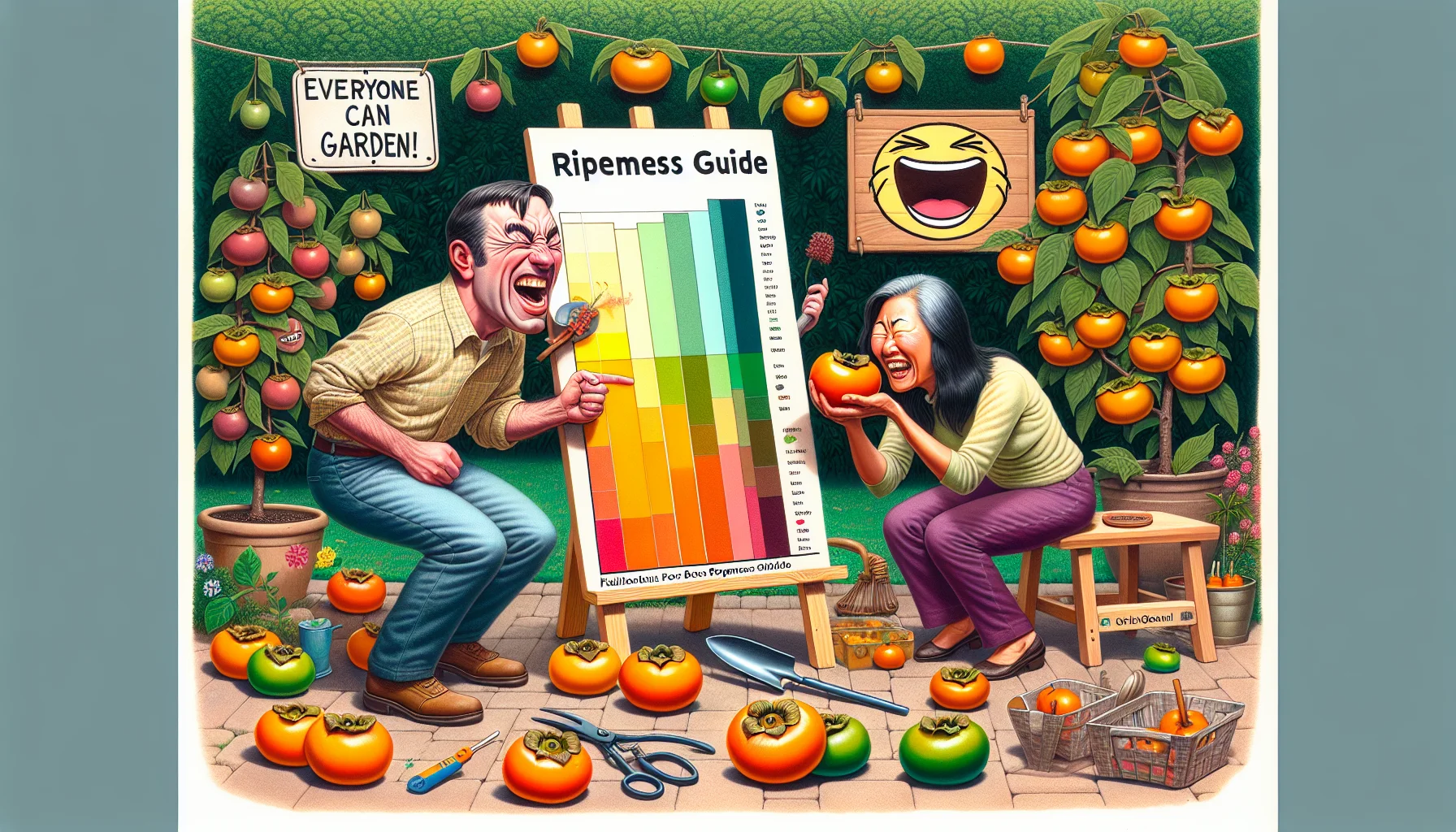How to tell if a persimmon is ripe Quiz
Test Your Knowledge
Question of
How to Tell if a Persimmon is Ripe
For gardeners and fruit enthusiasts, understanding the right time to pick persimmons is crucial. Recognizing the signs of ripeness ensures that the fruit is at its peak of flavor and texture, providing the best eating experience. This knowledge not only enhances the enjoyment of consuming persimmons but also aids in reducing waste by preventing the harvesting of fruit before it's fully matured.
Types of Persimmons
- Hachiya: This type of persimmon is acorn-shaped and is known for its astringent taste when not fully ripe. It's best enjoyed when it's very soft and almost jelly-like in texture.
- Fuyu: Unlike Hachiya, Fuyu persimmons are squat and somewhat resembles a tomato in shape. They are non-astringent, meaning they can be eaten while still firm. They have a sweet, pumpkin-like flavor.
Visual Signs of Ripeness
As persimmons ripen, their color transitions from a light yellow-orange to a deep, rich red-orange hue that is almost translucent. This color change is a reliable indicator of ripeness and sweetness. Additionally, the fruit's skin becomes softer and may exhibit a slight give when gently pressed. A ripe persimmon may also show a glossy sheen on its surface, indicating it is ready to be eaten. Observing these visual cues can help determine the perfect time to enjoy this delicious fruit.
Texture and Feel
The texture of a persimmon is a reliable indicator of its ripeness and varies significantly between varieties. Fuyu persimmons, known for their squat and slightly pumpkin-shaped appearance, maintain a firm and crisp texture even when ripe, making them perfect for eating out of hand like an apple. On the other hand, Hachiya persimmons, which are acorn-shaped and larger, transform from astringently unpalatable when unripe to wonderfully soft and jelly-like as they mature. The distinct softness of a ripe Hachiya is essential for its consumption, as it indicates the tannins have broken down sufficiently to allow for a sweet and pleasant eating experience.
Taste Test
Taste can be a definitive method to determine the ripeness of persimmons, cautioning against the astringency of unripe persimmons. The ripeness of a persimmon is crucial to its flavor profile. Unripe persimmons can have a highly astringent taste, making them unpleasant to eat. This astringency is due to the high levels of tannins present in the fruit before it reaches full maturity. As the persimmon ripens, the tannin levels decrease, and the fruit becomes sweeter and more palatable. Therefore, conducting a taste test is an effective way to ensure the fruit has reached its optimal ripeness, offering a balance between sweetness and texture without the harsh astringent qualities of its unripe state.
Storing Persimmons
To Hasten Ripening:
- Place unripe persimmons in a paper bag.
- Add an apple or a banana to the bag to increase ethylene gas concentration.
- Seal the bag and store at room temperature.
- Check daily for ripeness.
To Preserve Once Ripe:
- Keep ripe persimmons in the refrigerator.
- Place them in the crisper drawer to avoid ethylene gas exposure from other fruits.
- Consume within a few days for best quality.
- For longer preservation, peel and freeze the persimmons.
Common Mistakes to Avoid
When trying to determine if a persimmon is ripe, many people fall into the trap of relying solely on color. This method can lead to disappointment, as color is not always a reliable indicator of ripeness. Persimmons can vary in color intensity based on their variety, ranging from light yellow-orange to deep red-orange. A more accurate way to judge ripeness is by gently pressing the fruit to feel for a slight give, indicating it has reached its peak sweetness and is ready to eat. Additionally, paying attention to the variety of persimmon can also guide you, as some types, like the Fuyu, can be eaten while still firm, whereas others, like the Hachiya, must be very soft before consuming to avoid astringency.












